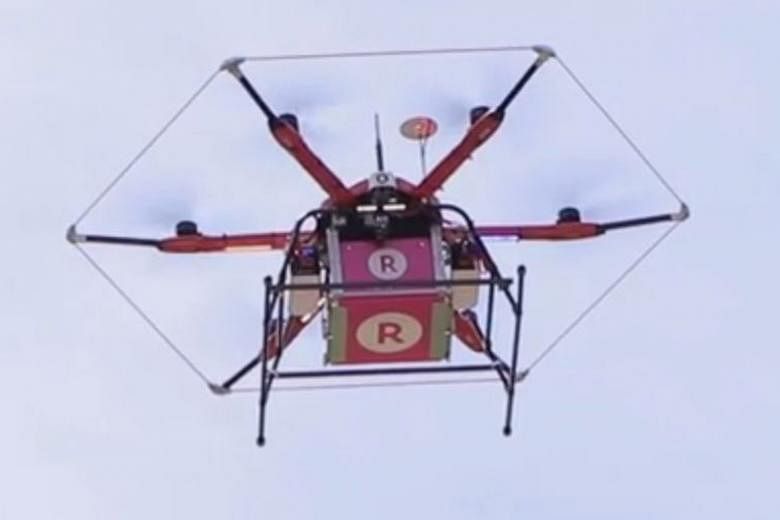Picture a future where drones swarm the skies, self-driving trucks ply the roads and autonomous ships sail the seas - all moving packages from one point to another.
This "humanless" delivery system is not a far-fetched scenario for Japan, which wants to roll out such technology by the early 2020s to reduce the strain on its overburdened delivery sector.
The industry is grappling with a shrinking pool of workers, even as the number of packages delivered hit a record 3.9 billion last year, with more people shopping online.
The ambitious vision was spelt out in a strategic blueprint released earlier this month by the Prime Minister's Office, even though the technology is still in its infancy.
The document also laid out a scenario where a package sent from a remote island in southern Shikoku gets delivered some 2,000km to northern Hokkaido via a network of autonomous vehicles, arriving "safely, securely, speedily and cheaply despite it being the middle of winter".
To get there, Tokyo has vowed to be an adaptive "playmaker" that will rewrite laws and promptly introduce the necessary infrastructure - such as a 5G mobile network - while working closely with private firms.
-
3.9b
Number of packages delivered in Japan last year.
20%
Proportion of the 3.9 billion packages that had to be redelivered.
Japanese online retailer Rakuten has already entered a joint venture with California-based AirMap, a global leader in drone airspace management, to look into traffic control for unmanned aerial vehicles.
Next year, Japan wants to start delivering parcels by drones in its mountainous regions, which cover 73 per cent of its total land area. Rollout in urban cities will come by the early 2020s.
Tests have begun in Chiba, a prefecture to the east of Tokyo that is a deregulated zone for drones.
Also, Japan will begin tests on driverless vehicles by next March, so as to have unmanned cars and trucks on its roads by 2020 and 2022, respectively.
It also wants unmanned ships in its waters by 2025.
Japan's three largest delivery firms - Yamato Transport, Sagawa Express and Japan Post, which collectively account for 90 per cent of all home deliveries - are struggling to cope with a surge in demand amid a labour shortage.
Many delivery workers are reportedly so busy that they have to skip lunch.
Recent employment data shows Japan's job market to be at its tightest since 1974, with the ratio of job openings to applicants at 1:1.48 in April. The ratio for delivery workers is worse, at 1:2.68.
Things are not likely to improve because delivery jobs tend to be unpopular as they come with gruelling hours and low pay.
The situation has been exacerbated by same-day deliveries, which put pressure on the country's tradition of personal deliveries.
Yamato and Japan Post have, in recent months, announced their first price hikes in more than 20 years. Yamato was also recently in the news for not paying its workers their overtime dues, and is now coughing up some 19 billion yen (S$237 million) retroactively.
The demands on their workers have also led Yamato to pull out of Amazon's same-day delivery services. Sagawa had done so in 2013.
Sagawa made the news when one of its employees was filmed venting his frustrations on a stack of parcels outside a Tokyo apartment last year. This was purportedly because the recipient was not home, which meant a return visit for the delivery man.
At least 20 per cent of the 3.9 billion packages delivered last year had to be redelivered, said industry expert Ryoichi Kakui at a media briefing last month.
Estimates show that to cope with the return trips alone, another 90,000 more workers are needed.
To woo workers, Sagawa has dangled the carrot of a four-day work week while also allowing them to take a second job - a move that Yamato is also reportedly considering.
The delivery industry has tried to cope by having pick-up options at convenience stores or delivery lockers at train stations. Firms are also tapping smartphone apps through which recipients must confirm their availability before a delivery, to cut down on wasted trips.
As more disruptive changes loom, Mr Kakui said the industry and consumers will have to adapt fast. "Otherwise, it will not lead to a drastic reduction in the demands on drivers."

